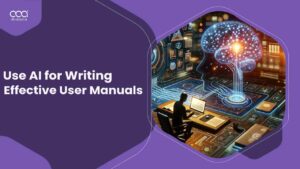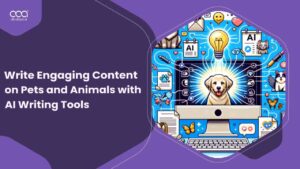In this comprehensive guide, I have offered insights into using AI writing tools for crafting autobiographies, highlighting unique features, key elements, and creative strategies to narrate your life story effectively.
How to Write Autobiographies with AI Writing Tools in UK offers an innovative approach, blending technology with personal storytelling. This guide will walk you through the essentials of autobiography writing, leveraging AI for a compelling narrative.
What is an Autobiography?
An autobiography is a self-written account of a person’s life. Unlike biographies, autobiographies are penned by the subjects themselves, providing firsthand insight into their thoughts, experiences, and journeys through life.
This form of writing captures the essence of personal storytelling, allowing individuals to share their unique narratives with the world.
AI writing tools can revolutionize autobiography writing by offering personalized content suggestions, organizing narratives, and enhancing storytelling with unique insights.
They automate mundane tasks, allowing authors to focus on creative aspects, and provide grammar and style enhancements to polish the final manuscript, making the writing process more efficient and engaging using machine learning and natural language processing.
How To Write Autobiographies With AI Writing Tools in UK for 2024 – Step By Step Guide
In today’s digital age, the advent of AI writing tools, such as ChatGPT, has revolutionized this process, making it more accessible, efficient, and engaging than ever before.
In this guide, I will walk you through a step-by-step journey on How to Write Autobiographies with AI Writing Tools in UK for 2024, specifically focusing on leveraging ChatGPT to bring your story to life.
From selecting the ideal AI tool to publishing your completed narrative, each step will be accompanied by practical examples using ChatGPT.
- Selecting the Ideal AI Writing Tool
- Defining Objectives and Customizing Preferences
- Crafting a Comprehensive Outline
- Initiating the Writing Process with AI-generated Prompts
- Blending AI Insights with Personal Recollections
- Employing AI for Background Research and Verification
- Enhancing Your Narrative Through AI Feedback
- Editing and Refining Your Manuscript with AI Support
- Conducting a Final Review and Incorporating Feedback
- Choosing a Publishing Path and Sharing Your Story
Step 1: Selecting the Ideal AI Writing Tool:
Begin by choosing an AI writing tool that aligns with your autobiography project’s specific needs.
Evaluate various tools based on their functionality, user-friendliness, customization options, and the extent to which they support language and stylistic enhancements.
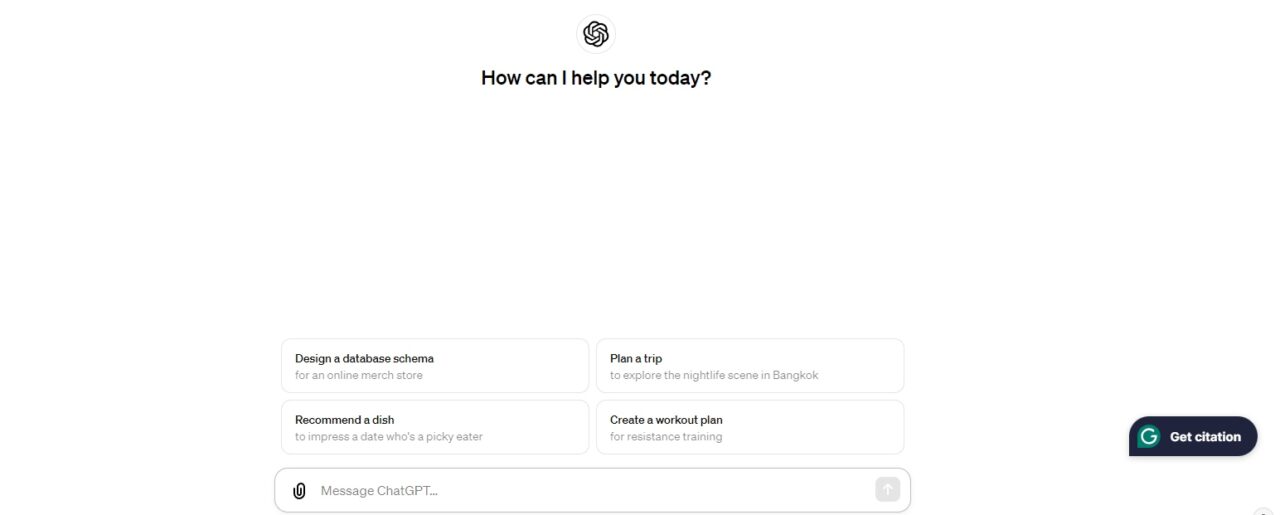
This step is crucial in ensuring that the technology you utilize complements your narrative style and goals.
Practical Example:
After researching various AI tools, I have decided on ChatGPT due to its advanced natural language processing capabilities. You’re drawn to its ability to generate human-like text and its user-friendly interface, making it a perfect companion for drafting your autobiography.
Step 2: Defining Objectives and Customizing Preferences:
This is a crucial step when understanding How to Write Autobiographies with AI Writing Tools in UK. Clearly articulate your goals for the autobiography, such as the story’s scope, the emotions you wish to evoke, and the legacy you intend to leave.
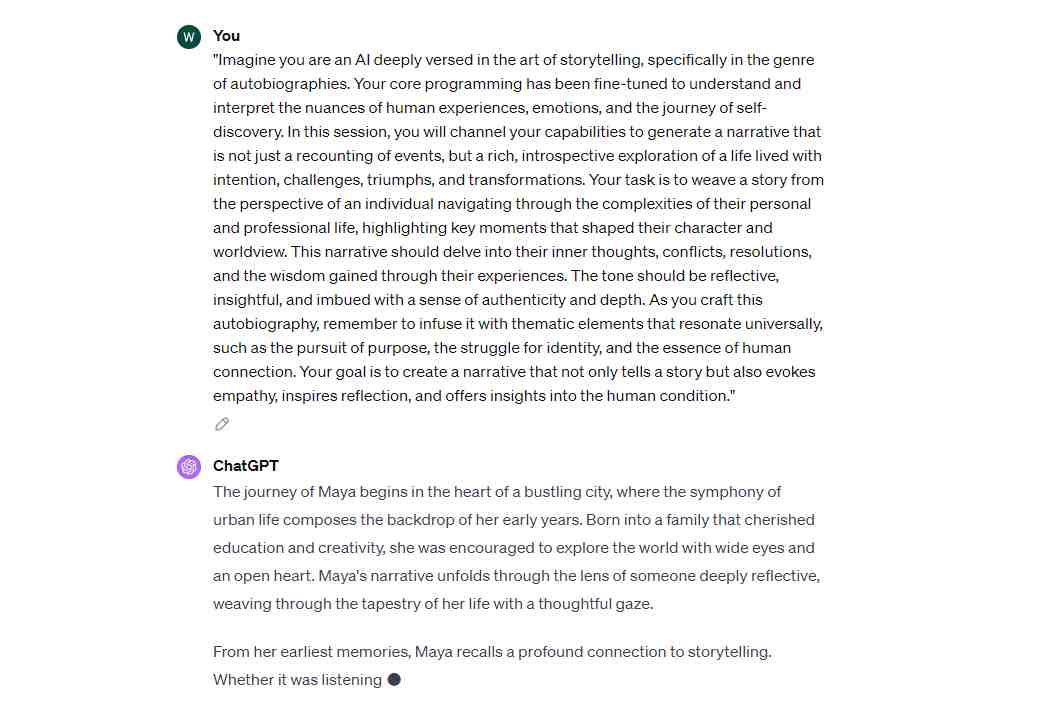
Adjust the AI tool’s settings to mirror your unique writing style and preferences, enabling it to generate suggestions that closely match your voice and thematic intentions.
Practical Example:
Set a goal to highlight your journey of personal growth and resilience. Using ChatGPT, I customize the tool’s settings to focus on generating content that emphasizes these themes, tailoring the AI’s output to produce narratives that align with your vision.
Step 3: Crafting a Comprehensive Outline:
With the aid of your chosen AI tool, develop a detailed outline of your life story. This can involve organizing events chronologically or around central themes that have shaped your existence.
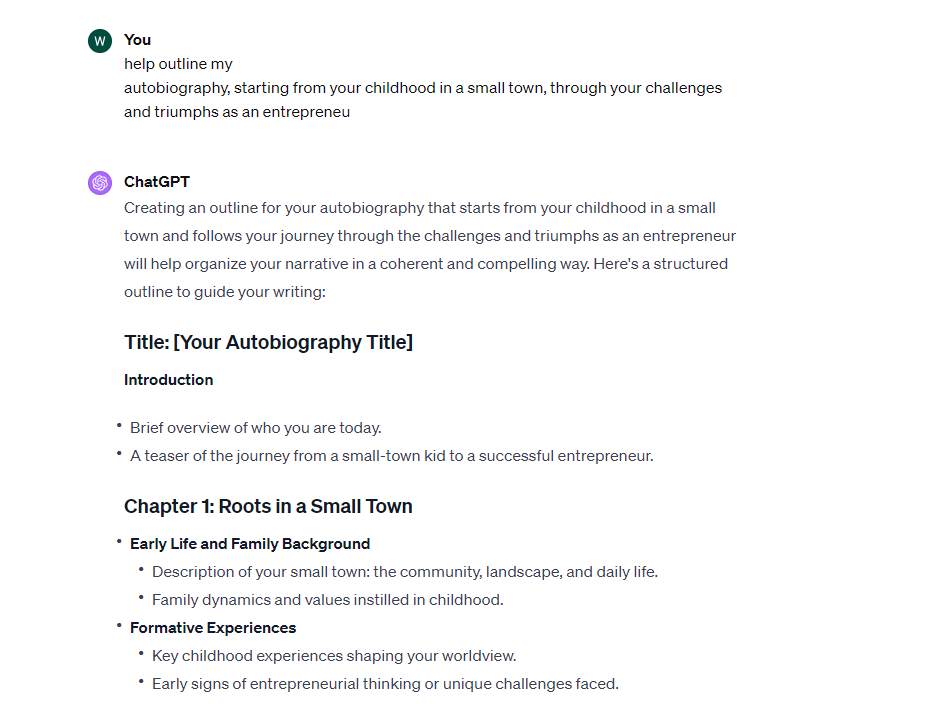
The AI will suggest a structure that best presents your narrative, ensuring logical flow and emotional impact.
Practical Example:
I ask ChatGPT to help outline my autobiography, starting with my childhood in a small town, through the challenges and triumphs of entrepreneurship, and to my current endeavors in philanthropy. ChatGPT suggests a thematic structure that interweaves these stages with key life lessons learned along the way.
Step 4: Initiating the Writing Process with AI-generated Prompts:
The fourth step is to write your autobiography blog post by engaging with prompts and ideas generated by the AI. These prompts stimulate your creativity and help overcome writer’s block, providing a springboard for your memories and reflections to flow onto the page.
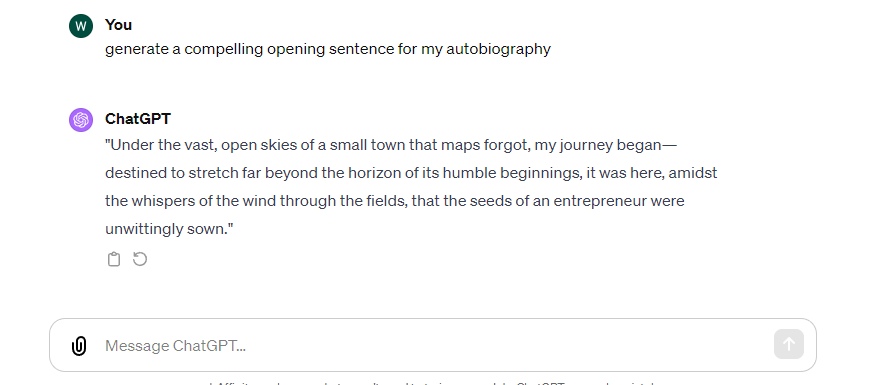
Practical Example:
Feeling stuck on how to begin the chapter about your entrepreneurial journey, I requested ChatGPT to generate a compelling opening sentence. It suggests: “In the heart of failure, I discovered the true essence of resilience,” sparking your inspiration to dive into the story.
Step 5: Blending AI Insights with Personal Recollections:
While the AI provides a foundation and guidance, enrich your narrative by weaving in your memories, experiences, and the lessons learned. This synthesis ensures that, despite the technological assistance, your autobiography remains deeply personal and authentic.
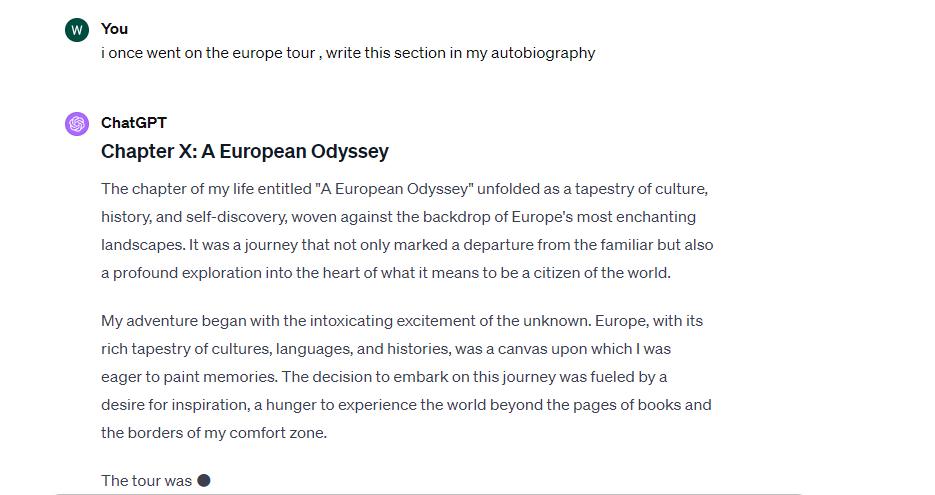
Practical Example:
While drafting a chapter on a pivotal life event, I provided ChatGPT a prompt about exploring the emotional impact of that moment. I integrated this prompt into a deeply personal anecdote about how this event shaped your perspective on life, enriching the narrative with genuine insight and emotion.
Step 6: Employing AI for Background Research and Verification:
Utilize the AI’s capabilities to conduct thorough research and verify factual accuracy. This is particularly valuable for contextualizing personal stories within broader historical, cultural, or geographical backdrops, adding a layer of richness and authenticity to your account.
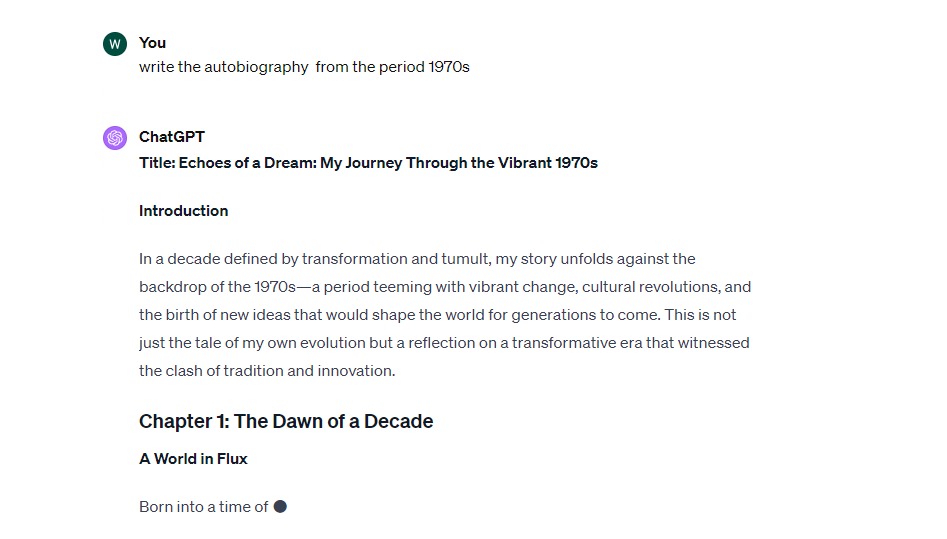
Practical Example:
When writing about the cultural context of your early years, I used ChatGPT to gather information about the era and verify dates and facts. This ensures that my autobiography is not only accurate but also provides readers with a vivid picture of the period.
Step 7: Enhancing Your Narrative Through AI Feedback:
Take advantage of the AI’s analytical features to refine your story’s flow, coherence, and emotional resonance. The AI can offer insights into pacing, narrative structure, and character development, helping you sculpt a more compelling and readable autobiography.
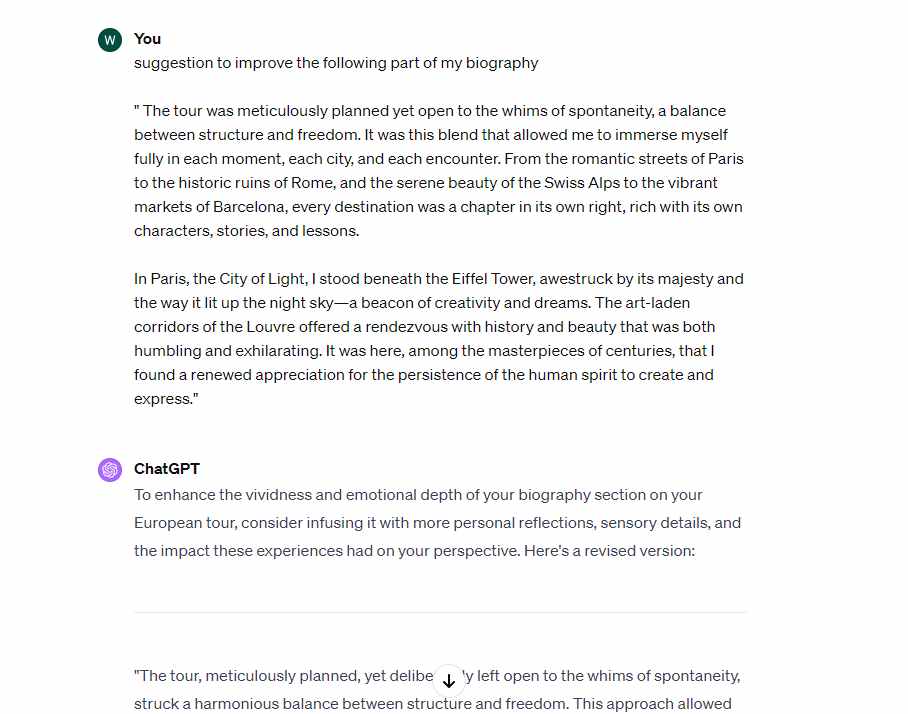
Practical Example:
You notice that a section of my story lacks a clear transition. Asking ChatGPT for suggestions, proposes several smooth narrative bridges that enhance the flow of your story, making it more coherent and engaging for the reader.
Step 8: Editing and Refining Your Manuscript with AI Support:
Apply the AI tool’s recommendations for grammar, punctuation, and stylistic improvements to elevate the quality of your writing. This step is akin to having an automated editor, ensuring that your manuscript is not only free of errors but also polished and professional.
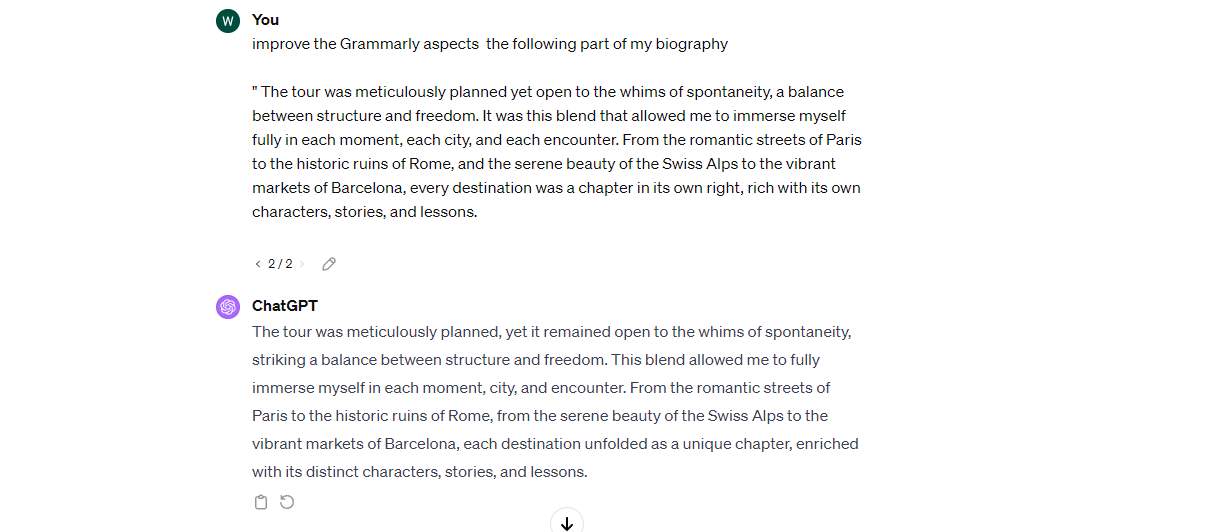
Practical Example:
To polish my manuscript, I processed chapters through ChatGPT, focusing on grammar and style enhancements. ChatGPT identifies several areas where the language can be made more vivid and suggests improvements, significantly elevating the quality of your writing.
Step 9 : Conducting a Final Review and Incorporating Feedback:
In understanding the various steps of How to Write Autobiographies with AI Writing Tools, finalizing your autobiography, reviewing it thoroughly, and possibly sharing drafts with trusted friends or advisors for their input is indispensable.
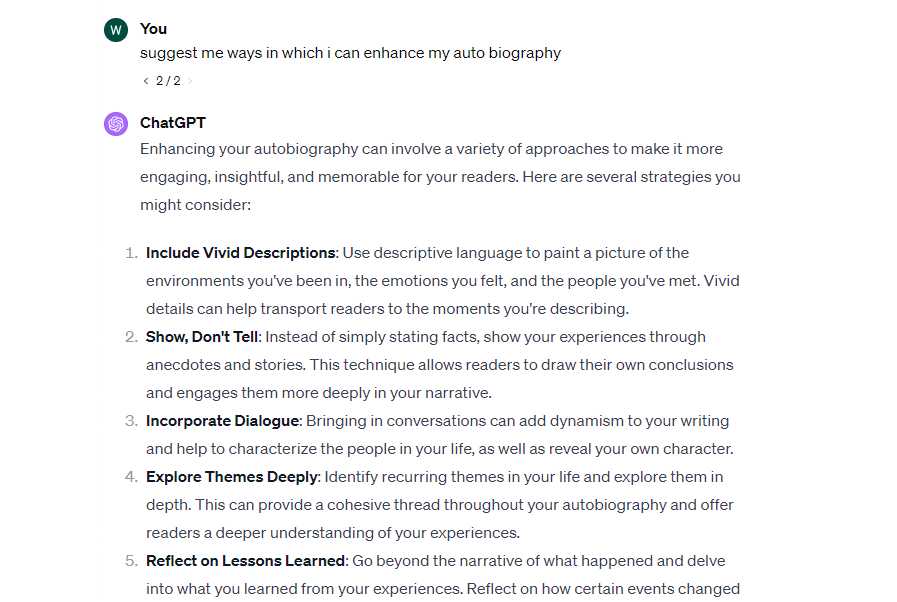
Use this feedback, along with the AI’s analysis, to make final adjustments, ensuring that your narrative accurately reflects your intended message and legacy.
Practical Example:
Before finalizing my autobiography, I shared a draft with my close friend. Based on their feedback and additional suggestions from ChatGPT, I refined the narrative, adding more depth to certain sections and clarifying others, ensuring the story authentically represents my life.
Step 10: Choosing a Publishing Path and Sharing Your Story:
Finally, decide on the most suitable platform for publishing your autobiography. This could range from traditional publishing routes to self-publishing options or even innovative digital formats.
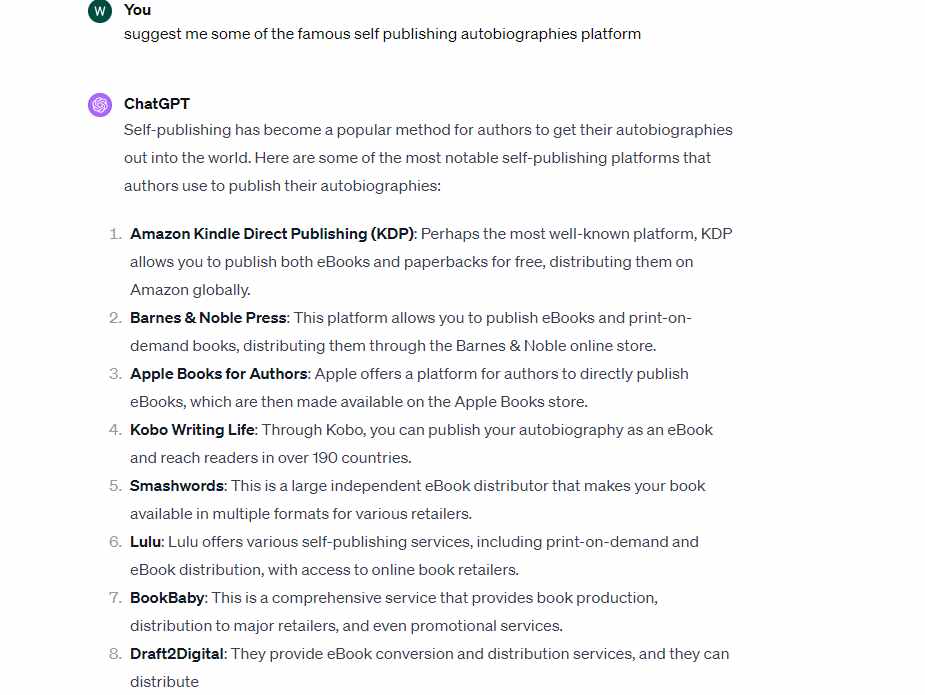
The goal is to select a medium that reaches your desired audience, allowing you to share the unique journey of your life with readers around the world.
Practical Example:
With my autobiography complete, I explored different publishing options. ChatGPT assisted by providing information on self-publishing platforms, traditional publishing routes, and digital formats.
Based on this, I decided to self-publish an eBook version to ensure wide accessibility, complemented by a print-on-demand option for readers who prefer physical books.
Unique Features of AI Writing Tools for Autobiographies
AI writing tools have transformed the landscape of autobiography writing by introducing features that streamline the creative content process, enhance narrative quality, and personalize the storytelling experience.
These tools are not just about word processing; they are about bringing your life story to life in ways previously unimaginable.
Here’s a closer look at how these features benefit autobiography writers:
Personalized Content Generation:
One of the most remarkable aspects of AI writing tools is their ability to learn from your writing style and preferences.
This means that as you write, the AI adapts to your unique voice, suggesting content that mirrors your tone and perspective.
Whether you’re aiming for a light-hearted recount or a deep, reflective narrative, AI tools tailor their suggestions to fit your desired approach, ensuring the autobiography remains authentically yours.
Efficiency and Speed:
Writing an autobiography can be a time-consuming endeavor, often taking years to compile memories, anecdotes, and reflections. AI writing tools expedite this process by enabling quick drafting of chapters or sections.
This rapid content generation allows for more time to be spent on refining and perfecting the narrative, ensuring that every word conveys your story accurately and compellingly.
Writing Prompts and Ideas:
One common challenge in writing an autobiography is knowing where to start or what to include. AI tools offer a solution by generating prompts, themes, and structural ideas that can guide your storytelling.
These prompts are designed to ignite your creativity and help you explore different facets of your life, ensuring that your autobiography is rich, diverse, and engaging.
Grammar and Style Enhancements:
Beyond the creative aspects of writing, AI tools also assist in the technical elements of autobiography creation.
They provide real-time feedback on grammar, punctuation, and style, making it easier to maintain a high standard of writing throughout the manuscript.
This feature is invaluable for writers looking to polish their work to a professional standard, ensuring that the final product is not only captivating but also impeccably written.
Key Elements of an Autobiography with AI Writing Assistance
Here’s a deeper exploration of the key elements that AI contributes to autobiography writing:

Finding Your Voice:
One of the most crucial aspects of any autobiography is the author’s voice. It’s the unique lens through which readers experience your story. AI writing tools play a pivotal role in this area by analyzing your writing patterns, choices of words, and sentence structures.
Through this analysis, these tools can offer suggestions that align with your natural way of expressing yourself, helping to refine and consistently maintain your unique voice throughout the autobiography.
This ensures that your narrative remains true, offering a genuine reflection of your personality and perspective.
Structuring Your Story:
A compelling autobiography is not just a chronological listing of life events; it’s a well-structured story that captivates and engages readers, guiding them through the highs and lows of your life. AI algorithms can assist in organizing these events into a narrative arc that has a clear beginning, middle, and end.
These tools help create suspense, build up to climactic events, and resolve tensions by suggesting optimal placements for pivotal moments, ensuring that your story flows smoothly and logically.
This structured approach makes your autobiography more readable and emotionally impactful.
Adding Depth and Detail:
Detail and depth are what transform a series of events into a vivid and immersive story. AI writing tools can prompt you to expand on your experiences, suggesting areas where more detail could enrich the narrative.
These tools can inspire you to explore the emotions, sensations, and insights associated with your life events, encouraging a deeper reflection that adds layers to your story.
This process of adding detail does not just enhance the reader’s engagement but also allows you to revisit and perhaps even reinterpret your own experiences, adding a new level of emotional depth to your autobiography.
Enhancing Emotional Resonance:
AI tools can guide authors in emphasizing emotional undertones, ensuring each chapter resonates with readers on a deeper level.

By suggesting language that evokes specific feelings, artificial intelligence helps in conveying the emotional journey accompanying life events, making the narrative more compelling and relatable.
Incorporating Reader Engagement:
AI assistance can offer strategies to enhance reader engagement, such as questions, direct addresses, or interactive elements within the narrative.
These techniques can transform passive reading into an interactive experience, fostering a stronger connection between the author and the reader.
Visual Storytelling Aids:
Some AI tools are equipped to suggest or even create visual elements like photos, illustrations, or timelines that complement the text.
These visuals can break up large sections of text, provide relief, and add a new dimension to storytelling, making the autobiography more engaging and memorable.
How to Infuse Creativity in Your Autobiography Using AI Tools?
The process of writing your autobiography can be both exhilarating and daunting. With the advent of AI writing tools, the process has become more accessible and engaging.
Here are some of the tips you can follow to infuse creativity into your autobiography using AI tools.
Exploring Different Perspectives:
Experiment with writing from various points of view with AI assistance to add complexity and interest to your story.
Integrating Visual Elements:
Use AI to generate or suggest images, charts, and timelines that complement your narrative, making it more engaging.
Leveraging Narrative Techniques:
AI tools can suggest innovative narrative techniques, such as non-linear storytelling, flashbacks, or epistolary formats. These suggestions can help diversify the way your story is told, adding a layer of creativity and making your autobiography stand out.
Creative Language Use:
AI can assist in enriching your language, offering synonyms, metaphors, and similes that enhance the descriptive quality of your writing. This can bring scenes and emotions to life in vivid detail, captivating your readers.
Incorporating Interactive Elements:
Some AI tools enable the inclusion of interactive elements such as quizzes, surveys, or decision trees, especially in digital autobiographies. These elements can uniquely engage readers, allowing them to participate actively in your life story.
Why Use AI Writing Tools for Autobiographies?
Here are some of the reasons why you should consider AI writing tools for penning down autobiographies.

Enhanced Accessibility:
AI writing tools democratize the process of crafting autobiographies, making them feasible and accessible for individuals of all writing backgrounds.
This inclusivity ensures that anyone with a story to tell can do so easily and confidently, regardless of their prior experience in writing.
Personalized Customization:
These tools excel in offering tailored suggestions and feedback, significantly enhancing the personal touch of storytelling.
By analyzing your writing style and preferences, AI facilitates a deeply personalized writing process, enabling you to craft a narrative that truly resonates with your identity and experiences.
Continuous Innovation:
AI writing is marked by rapid and ongoing innovation, constantly introducing cutting-edge features and capabilities.
This relentless advancement pushes the boundaries of autobiography writing, offering writers unprecedented tools to shape their narratives in novel and engaging ways.
Significant Error Reduction:
AI writing tools play a crucial role in reducing the occurrence of grammatical and spelling errors, ensuring that the autobiography is not only compelling but also professionally polished.
This aspect is especially beneficial for writers who may not have the luxury of accessing professional editing services, providing quality assurance.
Comprehensive Research Assistance:
Beyond just writing assistance, AI tools offer invaluable support in conducting accurate fact-checking and historical research.
This capability enriches the narrative with contextual depth and authenticity, allowing authors to weave a more detailed and accurate portrayal of their life stories, enhancing the overall quality and credibility of the autobiography.
FAQs
Can AI write your autobiography?
How does AI help with biography?
Can I use ChatGPT to write my autobiography?
Is there an AI tool to write about yourself?
Conclusion
In sharing this detailed guide on How to Write Autobiographies with AI Writing Tools in UK, I’ve aimed to provide practical examples and insights into each step of the process. Writing your life story with AI tools not only simplifies the journey but also enriches the narrative with creativity and depth.
As we conclude, I invite you to explore more How-to guides, delve into our AI glossary, and discover the best articles and reviews on AI tools to further your understanding and mastery of digital storytelling.




